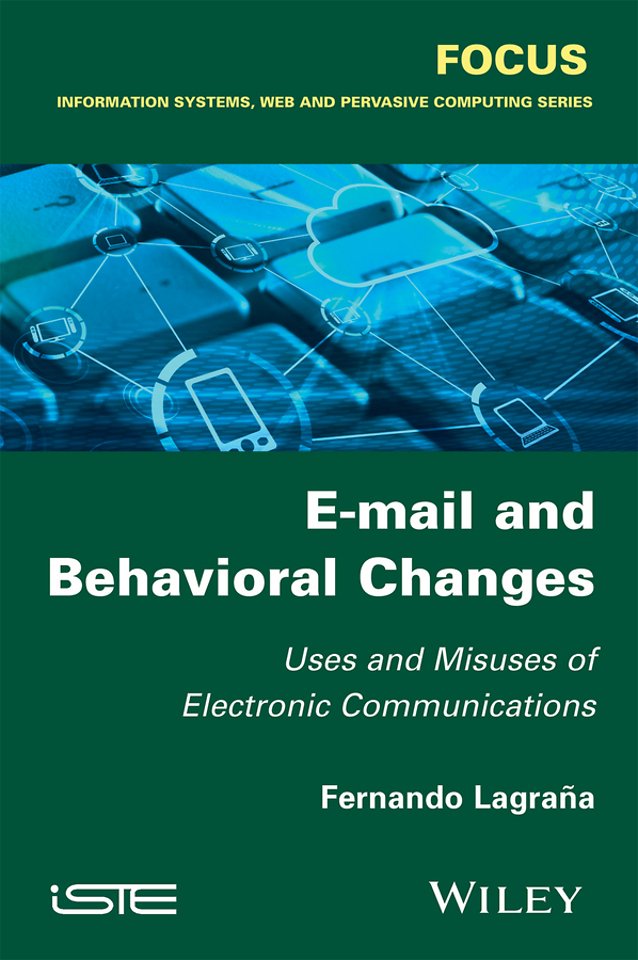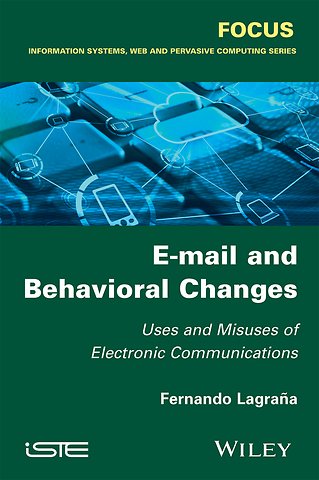E–mail and Behavioral Changes – Uses and Misuses of Electronic Communications
Uses and Misuses of Electronic Communications
Gebonden Engels 2016 9781848218505Specificaties
Lezersrecensies
Inhoudsopgave
<p>Preface xi</p>
<p>Introduction xv</p>
<p>Chapter 1. Electronic Mail 1</p>
<p>1.1. Electronic mail, what is it exactly? 1</p>
<p>1.2. The most used communication tool in the professional world 2</p>
<p>1.2.1. E–mail or telephone? 2</p>
<p>1.2.2. A growth that is not slowing down 3</p>
<p>1.2.3. A perfectly adapted tool for a business in touch 4</p>
<p>1.3. Characteristics and beginning of misuse 4</p>
<p>1.3.1. A remote and asynchronous means of communication 5</p>
<p>1.3.2. Almost instantaneous and interactive 6</p>
<p>1.3.3. Textual 7</p>
<p>1.3.4. Ubiquitous and mobile 8</p>
<p>1.3.5. Which allows numerous messages to be sent 8</p>
<p>1.3.6. On to the storing and archiving of messages 9</p>
<p>1.4. E–mail versus other communication tools 10</p>
<p>1.5. The structure of e–mail and its susceptibility to misuse 12</p>
<p>1.5.1. Structure 12</p>
<p>1.5.2. Envelope and body of the message: two possible targets 14</p>
<p>1.6. Other forms of electronic communication, other flaws 15</p>
<p>1.6.1. Instant messaging 15</p>
<p>1.6.2. Micro–blogging 16</p>
<p>1.6.3. Social networks 17</p>
<p>1.7. Conclusion 17</p>
<p>Chapter 2. From Role to Identity 19</p>
<p>2.1. Roles, boundaries and transitions 19</p>
<p>2.1.1. Spatial and temporal boundaries 20</p>
<p>2.2. Roles 21</p>
<p>2.2.1. Definition 21</p>
<p>2.2.2. Role boundaries 23</p>
<p>2.2.3. Transitions between roles 26</p>
<p>2.3. Identities 28</p>
<p>2.4. Conclusion 30</p>
<p>Chapter 3. Roles and the Digital World 33</p>
<p>3.1. When electronic communications disrupt space–time 33</p>
<p>3.1.1. The transformation of space 34</p>
<p>3.1.2. The transformation of time 34</p>
<p>3.1.3. The transformation of distance 35</p>
<p>3.1.4. Mobility and ubiquity 37</p>
<p>3.2. Role transformation 38</p>
<p>3.2.1. Role boundaries 38</p>
<p>3.2.2. Flexibility 38</p>
<p>3.2.3. Permeability 41</p>
<p>3.2.4. Role separation 41</p>
<p>3.2.5. Transitions between roles 42</p>
<p>3.3. Conclusion 43</p>
<p>Chapter 4. Challenges in Communication 45</p>
<p>4.1. Interpersonal communication: a subtle tool 45</p>
<p>4.2. Misunderstanding in communication 46</p>
<p>4.2.1. Sources of misunderstanding 47</p>
<p>4.2.2. The absence of an operating communication channel 47</p>
<p>4.2.3. The absence of a common vocabulary 48</p>
<p>4.2.4. Exclusive information context 48</p>
<p>4.2.5. Situations involving incomprehension 49</p>
<p>4.2.6. Distance communication 49</p>
<p>4.2.7. Asynchronous communication 50</p>
<p>4.2.8. Heterogeneous competence domains or levels 50</p>
<p>4.2.9. Man machine communication 50</p>
<p>4.2.10. E–mail: the accumulation of obstacles to comprehension 50</p>
<p>4.3. From misunderstanding to a lack of respect 51</p>
<p>4.4. A challenge for digital managers: communicating with the absent other 53</p>
<p>4.4.1. A lower volume of communication 53</p>
<p>4.4.2. A drop in communication quality 54</p>
<p>4.5. Conclusion 55</p>
<p>Chapter 5. Defining Spam 57</p>
<p>5.1. What is spam? 57</p>
<p>5.2. Preface: the influence of role on users perceptions of messages 57</p>
<p>5.3. Classifying e–mails according to role management theory 61</p>
<p>5.3.1. Roles and direct and indirect idiosyncratic connections 61</p>
<p>5.3.2. Roles played, transitions and perception of e–mail 65</p>
<p>5.4. Message classification model 68</p>
<p>5.4.1. E–mails received from unknown sources 68</p>
<p>5.4.2. Commercial spam 69</p>
<p>5.4.3. Fraudulent spam 70</p>
<p>5.4.4. E–mail received from known (trusted) sources 70</p>
<p>5.5. Conclusion 73</p>
<p>Chapter 6. A Lack of Ethics that Disrupts E–mail Communication 75</p>
<p>6.1. There is a new behavior behind every technical asset 75</p>
<p>6.2. Ethics and Information and Communication Technologies 76</p>
<p>6.3. Glossary of misuses and some of their consequences 79</p>
<p>6.4. Conclusion 104</p>
<p>Chapter 7. The Deadly Sins of Electronic Mail 105</p>
<p>7.1. Carefree exuberance 105</p>
<p>7.2. Confused identity 107</p>
<p>7.3. Cold indifference 108</p>
<p>7.4. Impassioned anger 109</p>
<p>7.5. Lost truth 111</p>
<p>7.6. The door of secrets 112</p>
<p>7.6.1. The ethical approach 112</p>
<p>7.6.2. The managerial approach 113</p>
<p>7.7. Fraudulent temptation 114</p>
<p>7.8. What answers should be given to these questions? 115</p>
<p>Chapter 8. The Venial Sins of Electronic Mail 117</p>
<p>8.1. Information overload 117</p>
<p>8.2. Anonymous disrespect 118</p>
<p>8.3. Communication poverty 118</p>
<p>8.4. Misunderstanding 119</p>
<p>8.4.1. Poorly written messages 119</p>
<p>8.4.2. Misread messages 119</p>
<p>8.4.3. When faced with misunderstanding, is empathy a solution? 120</p>
<p>8.5. Culpable ambiguity 120</p>
<p>8.6. Humor, love, rumors, and all the rest 120</p>
<p>Chapter 9. Exposure to Spam and Protection Strategies 123</p>
<p>9.1. Risk behaviors 123</p>
<p>9.1.1. Dynamic factors of spam exposure 124</p>
<p>9.1.2. Static factors of spam exposure 131</p>
<p>9.1.3. Other risks of spam exposure 133</p>
<p>9.2. Protection strategies 134</p>
<p>9.2.1. Keeping separate e–mail accounts 134</p>
<p>9.2.2. Using complex addresses 136</p>
<p>9.2.3. Treating received spam appropriately 136</p>
<p>9.2.4. Checking our e–proximity and network 138</p>
<p>9.2.5. Filters 139</p>
<p>9.2.6. Modify our sensitivity to spam 142</p>
<p>9.3. Conclusion 142</p>
<p>Concluding Recommendations 145</p>
<p>Bibliography 151</p>
<p>Index 157</p>
Rubrieken
- advisering
- algemeen management
- coaching en trainen
- communicatie en media
- economie
- financieel management
- inkoop en logistiek
- internet en social media
- it-management / ict
- juridisch
- leiderschap
- marketing
- mens en maatschappij
- non-profit
- ondernemen
- organisatiekunde
- personal finance
- personeelsmanagement
- persoonlijke effectiviteit
- projectmanagement
- psychologie
- reclame en verkoop
- strategisch management
- verandermanagement
- werk en loopbaan

